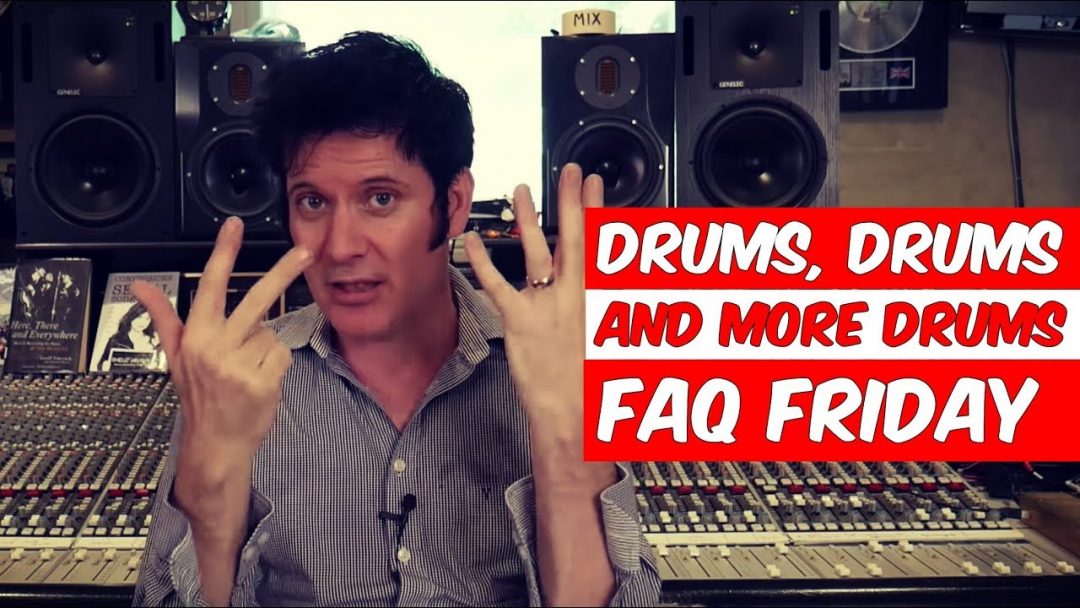Let’s jump into this week’s questions:
Any tips for recording drums in a bad room?
If your room is bad (not big, or doesn’t sound good, or has tons of reflections) you may not want to do room mics. Having tons of reflections in your room does not necessarily make it bad for room mics. If it’s overly bright and there’s a ton of windows, put blankets up! Get rid of the windows because every time you hit a cymbal it’s going to take your head off. You’ll want to be dampening the room to soak up the high end to prevent cymbal bleed.
So, when you say “bad room” it can be a wide range of things.
If you have a very small bedroom, then stick with close mics. You can make a blend of your close mics and send that to a reverb and you can add some ambience. If you wanted to use a snare or kick sample, you could trigger the reverb with the snare for example, so you don’t get the bleed of all the other mics.
A “bad room” is an interesting discussion because one person’s bad room, is another person’s amazing room. A small dead room is incredible for certain drum sounds. A big live room is amazing for certain drum sounds. But if it’s overly bright you’re going to want to dampen it!
I go into more detail about recording drums in a “bad room” in the video below!
I go into more depth about recording and mixing in the video below! I also answer the following questions:
• Would you recommend always using the same preamp on all drum mics?
• How you go about processing-compressing a snare with lots of ghosts notes to make it cut through the mix and keep its dynamic range?
• What’s the minimum number of mics you think you can get away with and still get a great drum sound?
• Any tips for recording drums in a bad room?
• Why do skilled recording engineers/producers/mixers send songs to other mixers to finish off?
I hope you enjoyed today’s FAQ Friday! I’ll see you next week!
